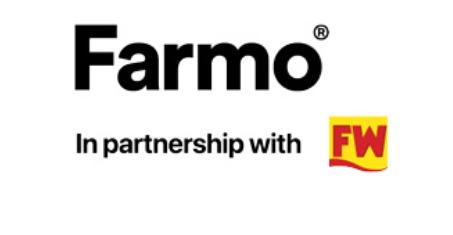Why two returning farmers pressed for regenerative change
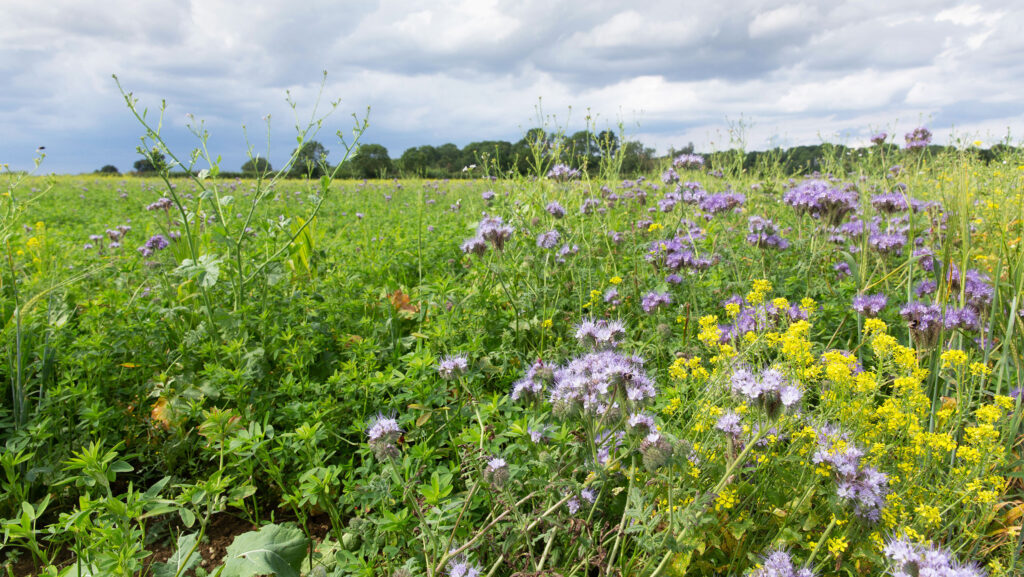 ©Tim Scrivener
©Tim Scrivener After 18 years working in sports marketing in London and for the Department of Health, Jennie Tatlock returned to the family farm in the Yorkshire Wolds in 2022, along with husband, Lawrence.
“Neither of us had any useful farming skills,” Jennie admits. Yet within a month of returning to the 110ha farm, she “enthusiastically” persuaded her parents that she would like to grow a crop of milling wheat without pesticides or fungicides.
See also: Groundswell 2025: Regen farming learnings from Gabe Brown
Jennie Tatlock, East Yorkshire
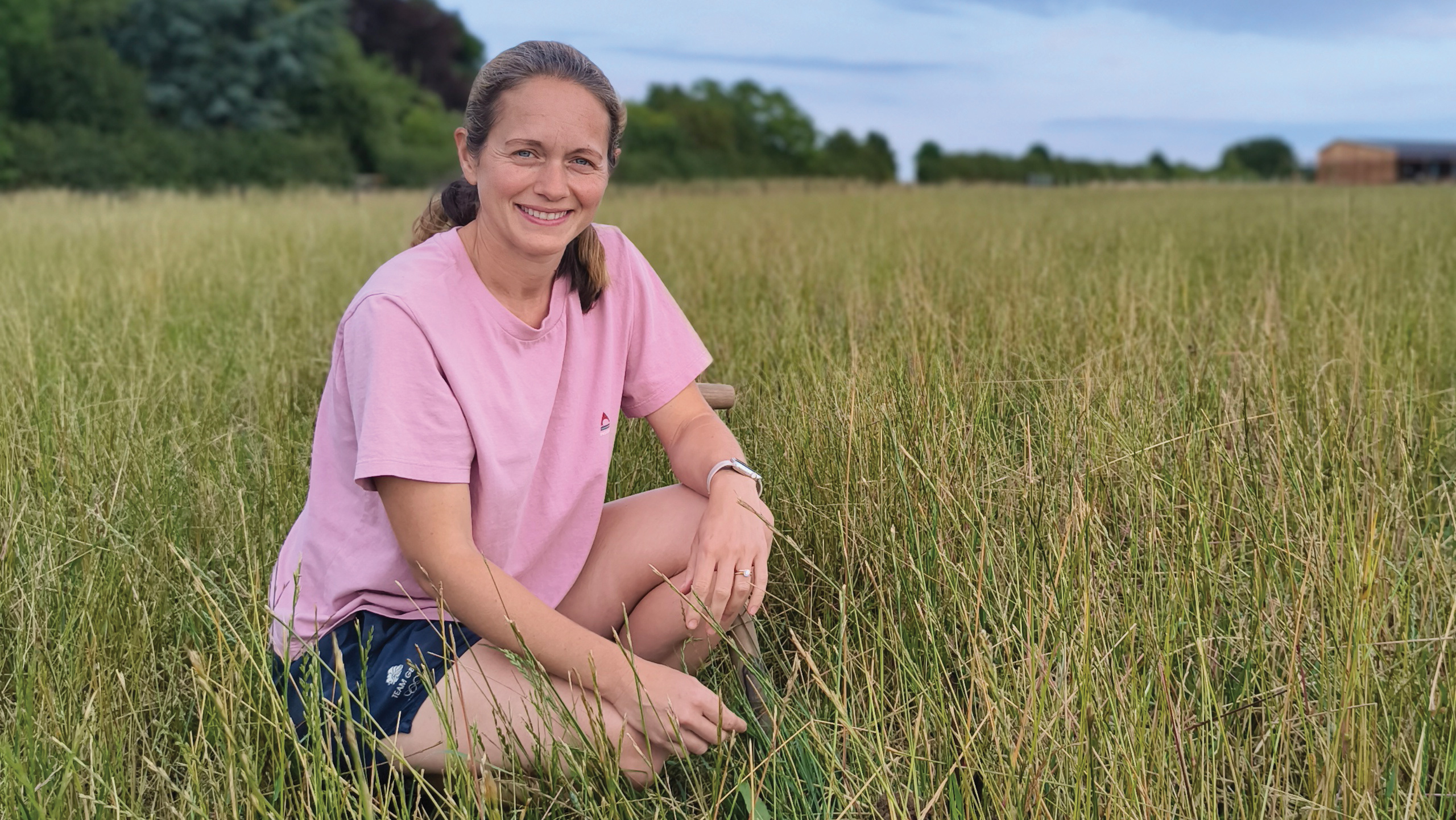
Jennie Tatlock © Jennie Tatlock
- Returned home after 18 years working in sports marketing
- Helping her dad continue his regenerative journey
- Brought sheep back on farm
- Established the Wolds Project
A Base-UK member, her father Chris Byass had been direct drilling and trying to reduce synthetic inputs for more than a decade on the farm near Driffield.
But Jennie’s arrival has given fresh impetus, bringing a new diversification, livestock and an “obsession” with soil biology.
“Chris said: ‘If you can find a market for it, you can try a field.’ He was maybe a little surprised when I found Wildfarmed the next day.”
“Our mission is to grow healthy, nutrient-rich food and try to connect people with where their food is coming from,” she explained.
Branded the Wolds Project, the diversification is building three cabins insulated with straw from the farm, with the aim of bringing in additional income to support the business, while providing local food for visitors.
Sheep return
One element is lamb from the Exlana sheep flock Jennie has also brought back onto the farm after a gap of around 20 years.
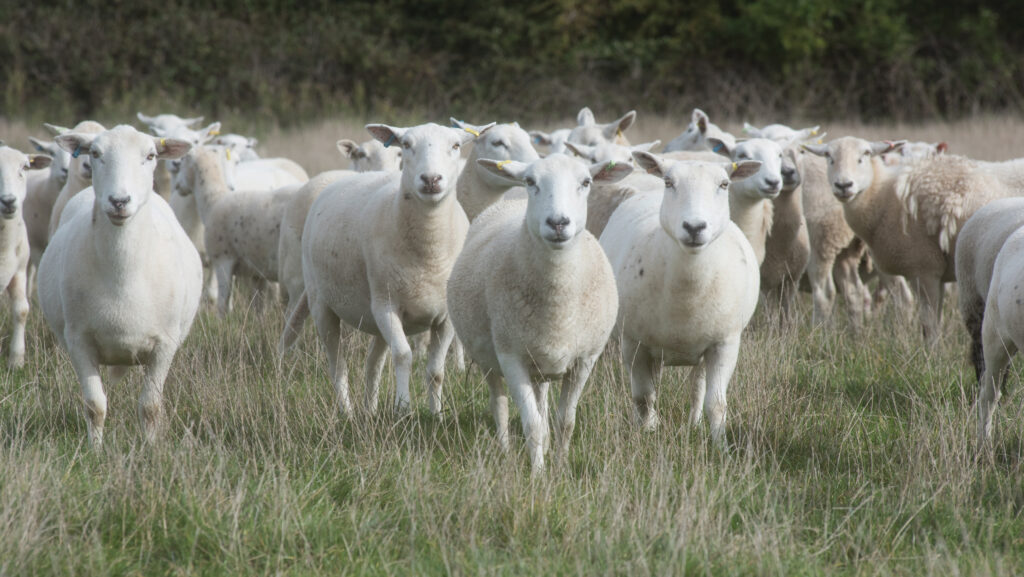
© Hugh Nutt
Lambed in April, the 100% pasture-fed sheep move across cover crops and herbal leys, with meat sold through a frozen-box scheme within 12 miles of the farm.
“The feedback from people who bought boxes has been fantastic, including about the flavour. I’ve come to realise that a big part of that is because of the soil,” she says.
“To truly regenerate our soils, we need to look after the biology and to build an environment where microbes and specifically fungi from an agricultural context can thrive,” she says.
That’s led to the farm embracing bicropping and companion mixes, growing flower strips and cover crops to increase plant diversity.
“More roots in the ground are leading to better water infiltration in the soil and therefore healthier plants,” Jennie says.
“Alongside this we have a subsoiler that we’re bringing back into use to lift the soil to get some air into it, and last autumn, we fitted a liquid applicator onto our Horsch drill.
“It only cost about £1,800 to fit, and it’s been a game changer for us, putting biology down the spout when we’re drilling.”
Brewing biologicals
Jennie brews Aiva Fertiliser biological product Bioplus T for 24 hours, as advised by Intelligent Farming’s Tim Parton, before adding molasses and some micronutrients to Wildfarmed and cover crop seed.
“When you look at the roots in the conventional system a few weeks after drilling they are white,” she said.
“We’ve learned they shouldn’t be white; they should be covered in tiny bits of soils, holding it together, creating a symbiotic relationship with the soil.
“That’s when the plant is taking nutrients from the soil, as opposed to the farmer putting everything on it.”
Sap testing and a second-hand Claydon Terrablade interrow hoe are helping to reduce synthetic inputs, although a cut in nitrogen fertiliser has meant a struggle to hit protein on conventionally grown milling wheats, which accounts for around half of the 60ha of wheat, with the rest grown for Wildfarmed.
“Without doubt we are a work in progress, she concludes. “But crucially, as a family we are on the same page. And after three years we are starting to see some real progress.”
Will Davey, Oxfordshire
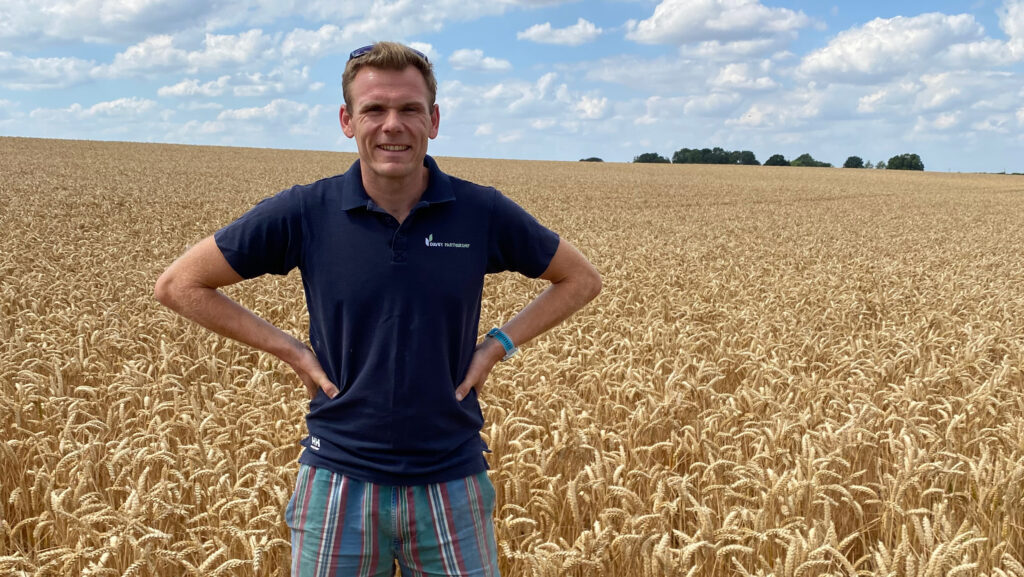
Will Davey © Will Davey
- Returned to family farming business after working as a vet
- Family started transition in 2015
- Grew winter barley crop without fungicides in 2021
- Bought Horsch Avatar drill in 2023
Family partnership
Like Jennie, Will Davey returned to the family farm in south Oxfordshire after a period off-farm, working as a farm vet.
“We’re a family partnership, with my parents and my sister involved in strategic decision-making,” he says.
The business crops 1,600ha, with 700ha under full control, mostly owned, but some in an Agricultural Holdings Act tenancy, with the remainder split between six different farming agreements.
“Food production is at the heart of what we do, but with an environmental conscience,” he says.
Maintaining yields
That has led to the business using regenerative principles with the aim of maintain yields and profitability while reducing inputs.
Their transition began in 2015 with cover crops, but it was growing a crop of winter barley in 2021 without any fungicides that was the big step, Will says.
The help of Edaphos agronomist Ben Harrington was crucial to the enterprise.
“Ben has been fantastic at challenging us in what we can do and our mindset in how we are doing it,” Will says.
“That step channelled our minds into focusing on trace elements and biological inputs to improve plant health rather than relying on chemistry.”
A second big step was purchasing a Horsch Avatar drill in 2023. “This allowed us to roll out direct drilling at a much bigger scale and onto the contract farms, which we hadn’t done much before.
“Having that capacity as drilling windows seem to get smaller has made a big difference to our business.”
A third improvement has come as the result of using the Farming Equipment and Technology Fund grant to buy a camera-guided inter-row hoe to add to one without.
“It’s an operation where the weather window is important to do a good job, so having two and a camera-guided one makes it easier.”
Variety blends
Other techniques, such as growing variety blends to reduce input costs have been incorporated over the past couple of seasons.
And growing for Wildfarmed has been both a challenge and an inspiration for applying techniques across a wider area.
So far that hasn’t included brewing microbes to apply when drilling. “We’ve been nervous because we don’t want to hold up operations when the weather is suitable, but it is something we want to do in future.”
Experience has taught that it is possible to move too fast on some of their land. “We learned that the foundations need to be right before you adopt certain sustainable practices, especially drainage, ditching and soil mineral status.”
Organic nutrition
The farm makes good use of organic nutrition, with a straw-for-pig-muck deal from working closely with a neighbouring pig producer, plus food waste digestate from Severn Trent Water.
“This year, most of our feed wheat received an early dose of 40kgN/ha of synthetic N, with the rest supplied by the digestate,” Will said.
That’s good for the carbon footprint and also seems to help against cabbage stem flea beetle attacks in oilseed rape, but brings some challenges with application in wet years and consistency of product.
“We test it regularly, but the results only come back after it has been applied. The test is useful to know whether you need to top up, but it’s hard to plan around, and there are also increasing questions around microplastics.”
Green schemes
The business has made good use of the Sustainable Farming Incentive (SFI) to help fund parts of the transition, with total income from the various schemes over the past two years matching funding from the Basic Payment Scheme (BPS) and Countryside Stewardship in 2021.
“I know there are some costs attached to SFI, whether through seed, time or producing soil management plans, but we would be doing most of this anyway and we’ve been able to get a good return,” Will says.
“We took some land out of arable production, experimenting with legume fallow and herbal leys, which is working well as a break crop.
“That’s allowed us to bring livestock onto the farm, lambing our first Exlana ewes this year, which gives us a dual output for the herbal leys.”

